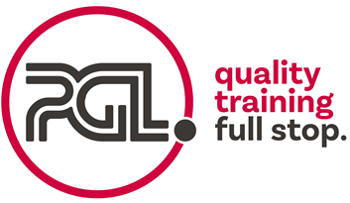Information
-
Document No.
-
Client
-
Site
-
Principal / Main Contractor
-
Site Manager
-
Conducted on
-
Prepared by
-
Location
Introduction
-
This inspection/audit has been undertaken by Holland Health and Safety Consultants Ltd . The purpose of the inspection/audit is to ensure the Principal / Main Contractors compliance with the Health and Safety at Work etc. Act 1974 and any relevant subordinate legislation, including but not restricted to, the Management of Health and Safety at Work Regulations 1999, the Construction (Design & Management) Regulations 2015 the Control of Asbestos Regulations 2012 and the Working at Heights Regulations 2005.
The report aims to identify areas where the Principal / Main Contractor needs to improve to meet the requirements of all relevant health and safety regulations and industry best practice procedures.
The 'corrective actions' section details the remedial actions graded as priority 'High', 'Medium' and 'Low'.
'High' rated actions should be completed as soon as is reasonably practicable, as these could potentially lead to serious injury and would likely lead to an enforcement officer issuing a 'Prohibition' or 'Improvement' notice against the site.
'Medium' rated actions should be completed with a reasonable timeframe (normally before the next inspection/audit)
'Low' rated actions are not compulsory but the contractor would benefit from addressing these points for continual improvement of health and safety standards.
Conclusion
1.0 - Management Documentation
-
Does the project exceed 30 working days or 500 person days?
-
Is the F10 on display?
-
Enter F10 run-out date.
-
Is the Construction Phase H&S Plan on site?
-
Does the plan accurately reflect the project?
-
Is the plan kept up to date to reflect changes?
-
Is there a copy of the company's Employers Liability insurance policy on display?
-
Enter run-out date of EL insurance.
-
Is there a copy of the company's health and safety policy on site?
-
Has the policy been signed by the senior person within the company?
-
Has the policy been reviewed within the last 12 months?
-
Does the policy accurately reflect the company operations?
2.0 - Site Specific Documentation
-
Are risk assessments available for all hazards with a potential significant risk?
-
Have Method Statements/Safe Systems of Work been prepared for works with a potential significant risk?
-
Do the risk assessments and Method Statements/Safe Systems of Work adequately control the risks?
-
Has the Principal/Main Contractor identified hazardous substances in use on site?
-
Is there a register of the hazardous substances in use?
-
Are MSDS sheets and/or COSHH assessments available for all hazardous substances on site?
3.0 - Site Management Training
-
Does the site manager hold a relevant Site Manager qualification? e.g. SMSTS
-
Is there an appointed site supervisor(s)?
-
Do site supervisors hold a relevant supervisory qualification? e.g. SSSTS
4.0 - Operative/ContractorTraining (general)
-
Have all operatives/contractors been safety inducted onto site, with a record held?
-
Have site operatives/contractors been briefed on the findings of the risk assessments, COSHH assessments and Method Statements/Safe Systems of Work?
-
Are regular on-site toolbox talks being undertaken?
-
Enter the date of the last toolbox talk.
5.0 - Asbestos
-
Has the site manager attended asbestos awareness training?
-
Are all relevant construction trade persons trained to asbestos awareness level?
-
Has refresher training been given (annual)y)?
-
Has a demolition/refurbishment survey been undertaken?
-
Have ACMs been identified within the survey report?
-
Have the ACMs been removed from the project area?
-
Are procedures in place to ensure ACMs are not disturbed?
-
Are there any signs of ACMs which have not been previously identified or have been disturbed?
6.0 - Fire & Emergency Precautions
-
Is a fire/emergency plan available for the site?
-
Is there a suitable system in place for raising an alarm?
-
Are sufficient fire extinguishers provided, of the correct type?
-
Have fire extinguishes been inspected by a competent person within the last 12 months?
-
Has anyone on site been appointed as a Fire Warden?
-
Do the Fire Wardens' hold a formal qualification?
-
Is there suitable storage for gas and flammable substances?
7.0 - Working at Heights (fixed scaffolds)
-
Are fixed scaffolds in use on site?
-
Has the scaffold been signed-off as fit for use by the scaffold contractor?
-
Is a Scaff-tag displayed close to the entry point to the scaffold?
-
Has the scaffold been inspected by a competent person within the last 7 days?
-
Are all working platforms fully boarded?
-
Are double handrails provided on all working platforms?
-
Are kick boards provided on working platforms?
-
Are all access ladders in good condition?
-
Are access ladders correctly secured and extended above the stepping off point?
-
Is the scaffold adequately tied where appropriate?
-
Does the scaffold appears to be fit for purpose?
8.0 - Working at Heights ( Tower Scaffolds)
-
Are tower scaffolds in use on site?
-
Are scaffolds erected/signed-off by a competent person e.g. PASMA qualified?
-
Are double hand-rails provided on all working platforms?
-
Do all towers appear to be erected correctly?
9.0 - Working at Heights (MEWPs & Scissor Lifts etc.)
-
Are MEWPs or Scissor Lifts in use?
-
Is the last 6 monthly competent person inspection certificate available on site?
-
Do operators hold a relevant license to operate the plant e.g. IPAF cert?
-
Is the equipment being used in a safe manner?
10.0 - Working at Heights (ladders, steps & hop-ups etc.)
-
Are ladders, steps, hop-ups or similar in use on site?
-
Is the equipment of the correct grade?
-
Class 1 'industrial use' or EN 131 'heavy duty'
-
Does the equipment appear to be in good condition?
-
Is the equipment being used in a safe manner?
11.0 - Working at Heights (On or Near Fragile Surfaces)
-
Is there any work on or near fragile surfaces?
-
Has suitable protection be provided to prevent persons falling?
-
Has a specific risk assessment been undertaken?
-
Is there a detailed task specific Method Statement covering the works?
-
Are the works being controlled under a permit-to-work procedure?
12.0 - Confined Spaces Working
-
Is there any confined spaces working on site?
-
Has an emergency plan been formulated specific to the works?
-
Is the work controlled under a permit-to-work system?
-
Have those undertaking the work received sufficient training?
-
Is there the possibility of a lack of oxygen within the space?
-
Has breathing apparatus been provided and are the operatives trained in its safe use?
-
Is there the possibility of a flammable atmosphere within the confined space?
-
Are none sparking tools and equipment in use and have all potential sources of ignition been extinguished?
13.0 - Excavations
-
Are there any excavations on site?
-
Has the excavation been inspected by a competent person within the last 7 days?
-
The excavation must not be used until signed-off as safe by a competent person!
-
Do site management undertake excavation inspections at the start of each shift?
-
Does the shoring appear to be adequate?
-
Has edge protection been provided to prevent persons or plant falling into the excavation?
-
Does the excavation appear to be in a safe and secure condition?
14.0 - Cranes & Lifting Equipment
-
Are cranes in use on site?
-
Has the crane been subject to thorough examination?
-
Are there suitably qualified people to supervise the lifting operations?
-
Are lift operations being correctly planned?
-
Has a safe system of work been put into place?
-
Is any lifting equipment being used on site?
-
Has the equipment been subject to a thorough examination?
-
Accessory for lifting: 6 monthly
Equipment for lifting people: 6 monthly
All other lifting equipment: 12 monthly -
Are lifting operations being correctly planned?
15.0 - General Work Equipment
-
Has all main work equipment been added to the site equipment register?
-
Is there evidence of electrical appliance testing having been completed?
-
Do management undertake regular inspections of work equipment?
-
Does all general work equipment appear to be in good condition?
-
Is there any tool/equipment specific formal training required?
-
Has the required training been provided?
16.0 - Noise
-
Are there any operations being undertaken which expose workers to potentially high levels of noise?
-
Have the noise levels been assessed or estimated?
-
Have noise control areas been defined?
-
Are operatives wearing hearing protection?
17.0 - Vibration
-
Are any tools/equipment in use which may expose workers to high levels of vibration?
-
Have vibration levels and safe work limits been assessed or estimated?
-
Is it likely that safe working limits may be exceeded?
-
Stop the work until suitable controls are identified & implemented.
18.0 - Welfare Facilities
-
Are suitable rest facilities provided?
-
Are suitable toilet facilities provided and kept in a clean and tidy state?
-
Are suitable hand-washing facilities provided?
-
Is there a supply of fresh drinking water?
-
Is there a means of making warm drinks and heating food?
19.0 - First-aid and Accident/Incident Reporting
-
Is there a statutory accident book on site?
-
Is there a trained first-aider on site?
-
Are they in-date for formal refresher training?
-
Have suitably stocked first-aid kits been provided?
-
Are regular checks undertaken of first-aid kits?
-
Are eye-wash stations provided?
-
Are eye-wash bottles in-date?
-
Has there been any accidents or incidents since the last report?
-
Has the accident/Incident been investigated?
-
Is the accident/incident reportable under RIDDOR?
-
Has the accident/incident been correctly reported?
20.0 - Site Waste Management
-
Have suitable skips been provided for waste collection?
-
Is waste being segregated into suitable waste streams (considering possibilities for recycling)?
-
Is all hazardous waste being segregated and disposed of correctly?
-
Is waste being removed from the work areas regularly to prevent a build-up?
-
Are all nails/screws etc. removed or knocked over in waste.
-
Is waste being removed from site by a licensed waste carrier?
21.0 - General Site Conditions
-
Is the site secured against unauthorised access?
-
Have suitable warning signs been posted at entry points to the site and at approx. 30 meter spacing around perimeter fencing?
-
Are access and egress routes maintained clear and unobstructed?
-
Have exclusion zones been set-up around any higher risk activities?
-
Are operatives wearing the correct PPE?
-
Are any holes or openings suitably covered when not in use?
-
Has sufficient background/task lighting been provided and being used?
Corrective Actions
-
HIGH Level Risk:
Compliance: failure to meet legal compliance or serious safety issue which may lead to prohibition or improvement notice action being issued by a visiting enforcement officer.
Recommendations: actions to be rectified as soon as is reasonably practicable. -
Corrective Actions (high risk)
High Risk
-
Add media
-
MEDIUM Level Risk:
Compliance: failure to meet with general standards expected of a competent contractor, industry best practice procedures or safety issues which may lead to minor accident or incident.
Recommendations: actions to be rectified prior to next CDM site inspection (where external support is required e.g. Safety courses, then it is acceptable to have these planned and booked prior to next inspection). -
Corrective Actions (medium risk)
Medium Risk
-
Add media
-
LOW Level Risk:
Compliance: action identified by the inspector to improve contractor safety management procedures or standards but unlikely to lead to enforcement action being taken.
Recommendations: actions may not be considered as compulsory, but would portray the company in a positive light and allow the contractor to show commitment to improving site safety management procedures and/or standards. -
Corrective Actions ( low risk)
Low Risk
-
Add media
Sign off
-
On site representative
-
Auditor











